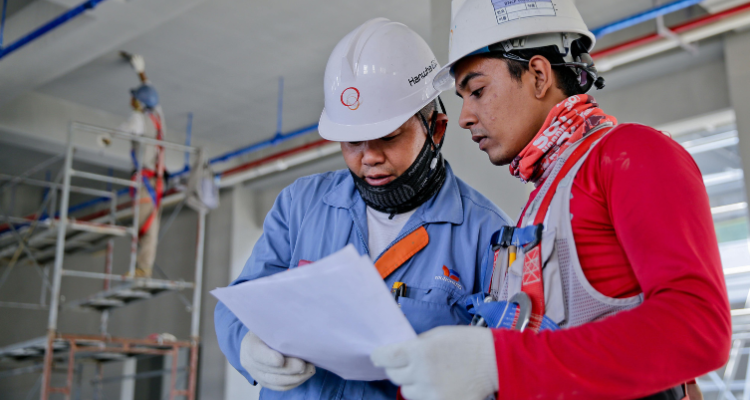From Excavation to Finishing: A Comprehensive Guide to Construction Equipment

Construction projects require a vast array of equipment to move from the initial groundbreaking to the final finishing touches. Each piece of machinery has a specific role, and understanding these roles is crucial for efficient project management. From heavy-duty excavators to precision tools used in the finishing phase, this guide covers the essential equipment used at various stages of construction. By understanding the functions and benefits of these machines, contractors can make informed decisions that enhance productivity, safety, and cost-effectiveness on the job site.
Excavation Equipment: Laying the Groundwork
Excavation marks the beginning of most construction projects, laying the groundwork for everything that follows. The equipment used during this stage must be powerful enough to handle large volumes of earth and tough materials like rock and clay. Excavators, the workhorses of this phase, come in various sizes and are equipped with different attachments depending on the job. Hydraulic excavators are particularly versatile, offering deep digging capabilities and the ability to handle heavy lifting tasks. Backhoes, which combine a digging bucket on the front and a trenching bucket on the rear, are also indispensable, especially on smaller sites where space is limited. Bulldozers, with their wide, flat blades, push large quantities of earth and are essential for creating level surfaces. These machines, when used effectively, ensure that the foundation of any structure is solid and prepared for the next phase of construction.
Earthmoving Equipment: Shaping the Landscape
Once excavation is complete, the focus shifts to moving earth to shape the landscape according to the project’s specifications. Earthmoving equipment plays a pivotal role during this stage, enabling the transportation, placement, and compaction of soil and other materials. Wheel loaders, with their large buckets, are ideal for scooping up and moving vast amounts of material in a short time. Dump trucks are then used to transport this material across the site or to off-site locations. Motor graders are particularly important for creating precise, level surfaces that will support roads, pavements, and building foundations. Scrapers, which can cut into the earth and transport it over short distances, are also frequently used for large-scale earthmoving tasks. Properly managing this equipment helps ensure that the site is shaped correctly, minimizing the risk of future structural issues and keeping the project on schedule.
Lifting and Loading Equipment: Handling Heavy Loads
In the construction industry, lifting and loading equipment is critical for moving heavy materials like steel beams, concrete blocks, and other bulky items. Cranes, perhaps the most iconic of construction machines, are used to lift these materials to the necessary heights, whether it’s for assembling the framework of a skyscraper or placing roof trusses on a residential home. Tower cranes, which are fixed to the ground or mounted on a structure, can reach incredible heights and are often used in the construction of tall buildings. Mobile cranes, on the other hand, provide flexibility as they can be moved around the site to handle different tasks. Forklifts are essential for moving materials over short distances, especially in warehouse environments or on smaller job sites. Telehandlers, with their extendable arms, offer a combination of lifting and reaching capabilities, making them incredibly versatile. The efficient use of lifting and loading equipment not only speeds up construction processes but also enhances safety by reducing the need for manual lifting.
Compact Equipment: Versatility in Confined Spaces
Compact construction equipment is designed for projects where space is limited or the terrain is difficult to navigate. These machines are smaller in size but are incredibly versatile, often serving multiple functions on the job site. Mini excavators are a prime example; while they perform many of the same tasks as their larger counterparts, their compact size allows them to operate in confined areas. Skid steers are another essential piece of compact equipment. Known for their maneuverability and ability to turn within their own footprint, they are ideal for tasks such as grading, loading, and digging. What makes skid steers particularly valuable are the skid steer attachments that can be easily swapped out to perform different functions, such as trenching, augering, and even snow removal. This versatility makes them indispensable on many job sites, especially those with space constraints or a wide variety of tasks to complete.
Concrete Equipment: Building Strong Structures
Concrete is the backbone of most modern construction projects, and the equipment used to mix, pour, and finish concrete plays a vital role in ensuring the strength and durability of the structure. Concrete mixers, whether truck-mounted or portable, are essential for blending the correct mix of cement, water, and aggregates. Once the concrete is mixed, it must be transported and poured quickly to prevent it from setting prematurely. Concrete pumps are often used to deliver the mixture to hard-to-reach areas, such as upper floors of buildings or deep trenches. After pouring, concrete must be leveled and smoothed, a task accomplished by screeds and power trowels. These machines ensure a flat, even surface, which is critical for the structural integrity and appearance of the finished product. Proper use of concrete equipment helps ensure that the final structure is both strong and aesthetically pleasing, capable of withstanding the test of time.
Finishing Equipment: Perfecting the Final Touches
The finishing phase of construction is where the project truly begins to take shape, with the focus shifting to details that enhance both the functionality and appearance of the structure. Finishing equipment includes a range of tools and machines designed to perfect these details. For instance, drywall sanders and polishers are used to smooth surfaces in preparation for painting or wallpapering. Flooring equipment, such as tile cutters and carpet stretchers, ensures that floors are installed precisely and securely. In exterior finishing, pressure washers are often employed to clean surfaces and remove any debris left from earlier construction phases. Landscaping equipment, like lawn rollers and hedge trimmers, adds the final touches to outdoor spaces, creating a polished, welcoming environment. By using the right finishing equipment, contractors can achieve a high-quality finish that meets or exceeds client expectations, ensuring the project’s success and the contractor’s reputation.

From the initial excavation to the final touches, construction equipment plays a crucial role in every phase of a project. Understanding the specific functions and benefits of each type of machinery enables contractors to optimize their use, ensuring that projects are completed efficiently, safely, and to the highest standards. Whether it’s the heavy-duty excavators that lay the foundation, the compact skid steers that work in tight spaces, or the finishing tools that perfect the final details, each piece of equipment is a vital part of the construction process. By investing in the right equipment and maintaining it properly, contractors can ensure the long-term success of their projects and the satisfaction of their clients.



